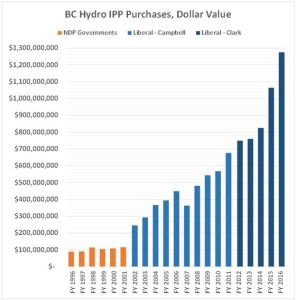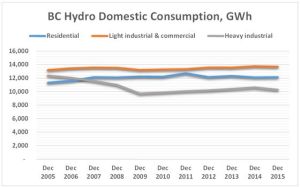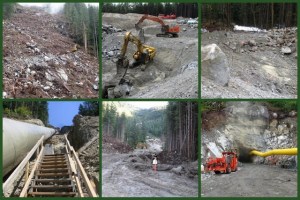An item from January 2015 has grown in importance. These recently created graphs support assertions within the article:
BC doesn’t need it, Alberta doesn’t want it, USA will pay a fraction of its cost. What is it: #SiteC power. https://t.co/yCEqNI7Rlq #bcpoli
— Norm Farrell (@Norm_Farrell) March 9, 2016
I urge you to read through various articles here about Narrows Inlet independent power projects. This is a powerful example of how a few connected profiteers impose a financial burden on the public by acquiring contracts for unneeded power at guaranteed prices far above market value. They claim to produce green energy but must pervert the concept to make the claim. Old time loggers would have been heavily penalized for doing what these people do to fish bearing waterways.
This was a comment on a preceding article from a regular reader. He’s a man I’ve come to admire for his dedication as he tries to reveal that government cut deals to enrich a few people at the expense of many. Additionally, those dishonest politicians forced environmental regulators to abdicate statutory responsibilities.
Work was done on coastal lakes and waterways that destroyed nature’s irreplaceable assets, not because the public had need but because influential people bought the opportunity to make quick bucks. It is so typical of the way BC Liberals do business today, while corporate media pays no attention.
I know what follows is accurate because I’ve been kept informed and I’ve read materials exchanged between concerned citizens and government officials who just pretend to carry out their duties. The comment is worthy of being featured:
Yes, someone knows how much [real value is realized from private power contracts] …but it ain’t us ratepayers. I couldn’t get the yearly figures for electricity purchased by BC Hydro from Renewable Power Corporation from their Tyson Creek IPP on the Sunshine Coast. My (paid for) FOI came back redacted because release of this info was deemed to be harmful to the private corporation. I wasn’t even asking how much we paid for it, just how much was produced! Now the same proponents have secured another EPA (purchase agreement) from BC Hydro, as well as getting Bennett and Polak to sign of on the EAO (environmental assessment office) file. This for the Ramona Lake drain and Chickwat Creek ruin of river project in the same area…..though Site C is likely going ahead, we get stuck with even more more hydroelectric IPP’s ….meaning even more water spilled without getting a return on our public investment. It is rather ironic that projects like Tyson and Ramona actually do wear out turbines significantly faster that legacy BCH dams…..large amounts of silt comes down due to the draining of the alpine lakes.
At the same time I was denied info on Renewable Power, I did get very complete info on the Fitzsimmons Creek IPP in Whistler. They produced 0 (zero) during the time of the Olympics. This despite a very in depth Global TV report on how the Olympics were making use of “green” renewable power from projects like Fitzsimmons. This kind of reminds me of the recent talk given by Craig Silverman on the “Hoax Economy”…..the business of spreading fake news. One need look no further than Global on this one.
Categories: BC Hydro, Environment, Independent Power Producers (IPP)








Excellent, information. The “Hoax Economy”, the corporate funding or (Dark money perhaps?), to counteract the “bloggers” and those who expose governments “shady agenda” with corporations, and the outright manipulation of government documentation and resources including ” the public's resources, taxpayers funds etc., is essentially what is happening here, and in other jurisdictions.
Rate Mair's latest commentary speaks to the levels of anger and frustration by many groups in this province, who are not beneficiaries of the Hoax Economy, or even what passes for the “real” economy. These groups are being marginalized and will continue to be unless a way is found to reduce the “establishments” hold on political power in this province and the country.
LikeLike
The second round of public comments from 2012 are kind of hidden….they are here. Good reading…..couldn't find too many that were in favour. There were some favourable ones in the 2008 public comments, but they can be traced to relatives of the proponents and owners of other IPP's.
http://a100.gov.bc.ca/appsdata/epic/html/deploy/epic_document_313_34889.html
LikeLike
Motorcycle Guy
Narrows Inlet Hydro Project aka Tzoonie River
Tzoonie River Documents Index
The Source of the above Tzoonie Documents
LikeLike
You bet NVG, good reminder…..I played around with that software back in 2008 when I first heard of Renewable and their Tyson Lake draining project. That was back when I (of reasonable intelligence, and having a soft spot for rotating machinery) thought “run of river” was run of river.
I found it notable that the use of this software prompted the principals of Renewable to tie up a very large number of BC rivers and streams with water licences for hydro power (for a minimal fee from the provincial government). Their companies (including the very hard to track numbered ones) account for one of the largest number of licences held by any one entity in BC. I can't find the link to that water licence site right now, but for sure North Van's Grumps is the man for the research….he sure provides some great links on so many subjects.
I believe software of this type was actually used by BC Hydro a long time ago, with the info made available to private companies who may want to participate. I believe this could have been a good idea if it weren't for getting carried away (and if it weren't for stockbrokers)…..taking communities off of diesel gensets for even part of the year is a good thing….supplementing legacy hydro for nearby communities is also good…..but draining lakes and running rivers dry to power more air conditioners in California is not so good…especially when the profits leave this province after said companies secure EPA's and EAO approvals under the guise of “BC owned and operated”….then sell out.
The software is indeed used to size the penstocks, which are usually larger than the nameplate capacity of permits being applied for. Once they get EAO approval there is no requirement for another EAO assessment to increase capacity at a later date. Or to export the extra water the pipes can hold that is not being used to generate electricity.
I am not familiar with how they determine economic viability…..we should look at that part of the software and see if there is a box to check that says “increase electricity rates” to make the equation balance.
Thinking the “optimal intake location” part of the program is not working so well. Just look at the huge sediment drop into the Tzoonie River when the lake bottom gave way after getting drained 60 feet…in the winter….with the ice scouring the shoreline adding to the issue…..the “Tyson Lake Sediment Incident”….soon to be re-run with Ramona Lake.
They seem to have deleted the “available infrastructure” option. So many of our pristine fjords and lakes have become industrialized with spiderwebs of power transmission lines and linear cuts for penstocks….nowhere near existing infrastructure.
Noticeably absent is provision for analysis of environmental concerns……luckily the federal government solved that oversight by removing responsibility for fish habitat from the fisheries department.
Norm said “that new corporate funding has been assembled to counteract bloggers and writers in alternative media who reveal mismanagement of provincial assets and emphasize the public’s declining share of natural resources”…….this corporate funding also takes the form of high end employment in the private sector for government employees and policy makers that facilitate approval of these projects….then go work for the companies they approved (another list for North Van's Grumps to find!)……”Hoax Economy” says it all…..but not in the domain of independent bloggers and news sources…..the hoax is by corporate manipulation of our elected officials and outright purchase of our mainstream media “journalists”.
LikeLike
Motorcycle Guy, apparently there's a UBC software program called HydroRecon that can determine how much each project can create in electricity just by inputting the length of the reservoir.
Renewable Power Corporation
Renewable Power Corporation Research
UBC HydroRecon
Aquarius R & D HydroRecon uses GIS and Digital Elevation Models(DEMs) to quickly scan large areas and determine potential hydropower sites based on potential head and runoff (available power) HydroRecon uses GIS and Digital Elevation Models(DEMs) to quickly scan large areas and determine:
potential hydropower sites based on
potential head and runoff (available power)
potential storage using natural water-bodies.
available infrastructure (distance to roads and transmission lines)
economic viability.
Every catchment is scanned to determine optimal intake location. ·
PRISM precipitation and Obedkoff regional runoff models used to determine volume runoff.
Aquarius I image
Aquarius II image
Another baby of of UBC is their Watershed Model which was used for Site C
LikeLike
Motorcycle Guy roars, we should listen, and then we should roar too…
LikeLike